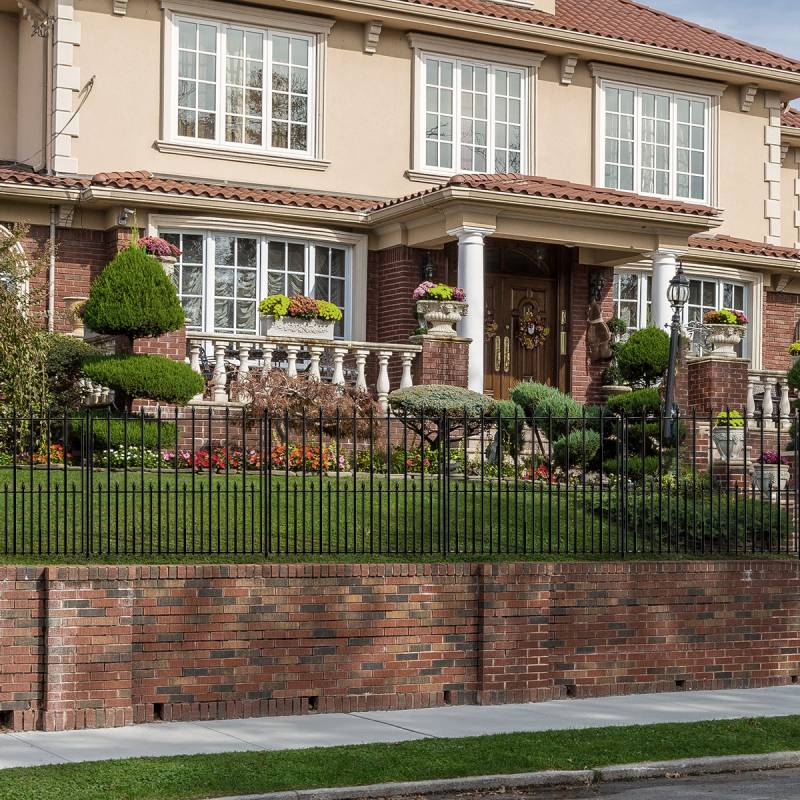Current Costs of Agricultural Fencing per Meter in 2023
Dec . 13, 2024 19:37
Understanding Agricultural Fencing Prices per Meter
Fencing is an essential part of agricultural operations, playing a crucial role in protecting livestock, crops, and property boundaries. When considering the different types of fencing for agricultural purposes, understanding the costs involved is critical for farmers and landowners planning their budgets. This article explores the various factors influencing agricultural fencing prices per meter, providing insights into materials, installation costs, and tips for making cost-effective choices.
Factors Influencing Fencing Prices
1. Material Selection The choice of material significantly impacts the overall cost of fencing. Common materials used in agricultural fencing include barbed wire, woven wire, electric fencing, and wood. - Barbed Wire This is one of the most economical options, costing approximately $0.10 to $0.30 per meter. It is effective for keeping livestock within boundaries and deterring intruders. - Woven Wire A more durable option, woven wire fencing can range from $0.50 to $2.00 per meter depending on its height and the gauge of the wire. It provides excellent containment for smaller animals and is ideal for protecting crops. - Electric Fencing While the initial setup may be more expensive (ranging from $1.50 to $3.00 per meter), electric fencing can be cost-effective in the long run due to its deterrent capabilities and lower maintenance costs. - Wood Fencing Offering aesthetic appeal and strength, wood fences can be quite pricey, ranging from $5.00 to $10.00 per meter. This type of fencing is more commonly used in residential or decorative settings rather than extensively in agriculture.
2. Height and Length of the Fence The dimensions of the fence also affect pricing. Taller fences generally require more material and labor, resulting in higher costs. Additionally, the total length of the fence will multiply material costs, so budget planning should consider both the height and total perimeter.
3. Labor Costs Installation can make up a significant portion of the total expenditure. Hiring professional contractors can range from $5.00 to $15.00 per meter for installation, depending on the complexity of the job and local labor rates. DIY options can save money, but they require time, effort, and expertise.
4. Terrain and Location The type of terrain on which the fence is installed can influence both material choice and installation costs. Rocky, uneven, or heavily wooded areas may require additional tools and effort, adding to the overall price per meter. Urban areas may also see higher costs due to permit requirements and logistical challenges.
agricultural fencing prices per meter

5. Maintenance Costs It’s essential to factor in the long-term maintenance costs when evaluating fencing options. Materials like wood may require regular treatments or replacements, while electric and metal fences may need periodic inspections and repairs. Understanding these future costs can help in choosing the most economical fencing solution.
Cost-effective Fencing Solutions
To manage fencing costs effectively, consider these strategies
- Research Local Prices Obtain quotes from multiple suppliers and contractors to find the best deals on materials and labor. - Invest in Durable Materials While initially more expensive, investing in durable materials can lead to long-term savings by reducing the need for frequent replacements. - Plan Thoroughly Before installing, carefully plan the layout and required materials to minimize waste and unnecessary expenses. - Consider Hybrid Solutions Combining different types of fencing can be a cost-effective strategy. For instance, using barbed wire for boundaries and woven wire in specific areas can balance costs and effectiveness.
Conclusion
Understanding agricultural fencing prices per meter involves considering various factors, including material choice, installation costs, and ongoing maintenance. With careful planning and research, farmers can make informed decisions that protect their investments while maintaining budgetary constraints. By selecting the right type of fencing and possibly leveraging DIY solutions, agricultural operations can achieve both functionality and cost efficiency.




















